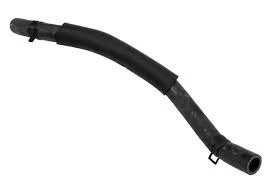Troubleshooting O-Ring Sealing Issues in Various Applications
Understanding O-Ring Sealing Failures The Case of the O-Ring Not Sealing
O-rings are a vital component in a myriad of industries, serving as seals in various applications ranging from automotive engines to aerospace technologies. Their primary function is to prevent fluid or gas leaks, ensuring the integrity of systems under pressure. However, issues such as an O-ring not sealing can lead to significant operational failures, safety hazards, and increased maintenance costs. This article delves into the common reasons why O-rings fail to seal properly, the implications of such failures, and effective strategies for prevention.
What is an O-Ring?
An O-ring is a circular, elastomeric sealing element that fits into a groove and is compressed between two or more parts to create a seal. The material of O-rings can vary from rubber to fluoropolymers, depending on the application’s requirements concerning temperature, pressure, and chemical compatibility. Despite their simple design, O-rings are highly effective when installed correctly and maintained appropriately.
Common Causes of O-Ring Sealing Failure
1. Improper Installation One of the most prevalent reasons for O-ring failure is improper installation. If an O-ring is twisted, pinched, or not seated correctly in its groove during installation, it can lead to gaps that allow fluid or gas leakage. Additionally, using the wrong size O-ring can exacerbate this issue, as an oversized or undersized ring will not fit properly, increasing the likelihood of failure.
2. Chemical Compatibility Not all O-rings are created equal; their effectiveness is heavily influenced by the chemicals they encounter. If an O-ring made of a particular material is exposed to corrosive substances or operating conditions beyond its designed specifications, it can degrade, swell, or harden, leading to sealing failures. Understanding the chemical compatibility of O-rings with the intended media is crucial.
3. Temperature Extremes O-rings are subject to thermal expansion and contraction. Operating in extreme temperatures can cause materials to lose their elasticity, resulting in gaps at the sealing surfaces. High temperatures can lead to hardening, while low temperatures can make materials brittle, impairing their sealing capabilities.
4. Environmental Factors Factors such as moisture, UV exposure, and ozone can also compromise the integrity of O-rings. Outdoor applications or those exposed to fluctuating environmental conditions require careful selection of O-ring materials that can withstand such challenges.
5. Physical Damage Over time, O-rings can become damaged due to abrasion, cuts, or wear from mechanical parts. This physical degradation can prevent proper sealing, allowing leaks to occur. Regular inspections can help identify these issues before they lead to severe problems.
o ring not sealing

Implications of O-Ring Sealing Failures
The ramifications of O-ring sealing failures can be significant. In industries such as aerospace, even a minor leak can lead to catastrophic failures, resulting in safety hazards and costly downtime. In automotive applications, failure can mean loss of engine efficiency or malfunctions, impacting overall performance. Furthermore, the environmental impact of leaks—especially in systems carrying hazardous substances—can be detrimental.
Prevention Strategies
To mitigate the risk of O-ring failures, several strategies can be implemented
1. Proper Selection Choose the correct material and size for O-rings based on the specific application requirements, including pressure, temperature, and chemical interactions.
2. Quality Control Ensure that O-rings are sourced from reputable manufacturers who adhere to strict quality control measures. Low-quality materials are more prone to failure.
3. Training and Education Educate personnel on proper installation techniques and the importance of O-ring maintenance to minimize the chances of human error.
4. Regular Inspections Implement regular maintenance checks to examine the condition of O-rings and replace them before they reach the end of their service life.
In conclusion, while O-rings are simple components, their failure to seal can lead to serious consequences across various industries. By understanding the causes of O-ring sealing failures and implementing effective prevention strategies, organizations can enhance the reliability and safety of their operations. Proper material selection, training, and maintenance are key to ensuring that these essential seals perform as intended throughout their lifecycle.
-
Understanding the Front Main Engine Seal: Purpose, Maintenance, and Installation
News Jul.29,2025
-
Understanding O-Rings and Seal Rings: Types, Applications, and Custom Solutions
News Jul.29,2025
-
Understanding Crankshaft Oil Seals: Rear Seals, Pulley Seals, and Their Role in Engine Integrity
News Jul.29,2025
-
The Importance of Front and Rear Crankshaft Seals in Engine Performance and Oil Management
News Jul.29,2025
-
Crank Oil Seals: Functions, Types, and Cost Considerations in Engine Maintenance
News Jul.29,2025
-
A Comprehensive Guide to O-Rings and Seals: Types, Materials, and Global Applications
News Jul.29,2025
-
Mastering Diesel and Performance Engine Maintenance: A Guide to Critical Oil Gaskets
News Jul.28,2025
Products categories















